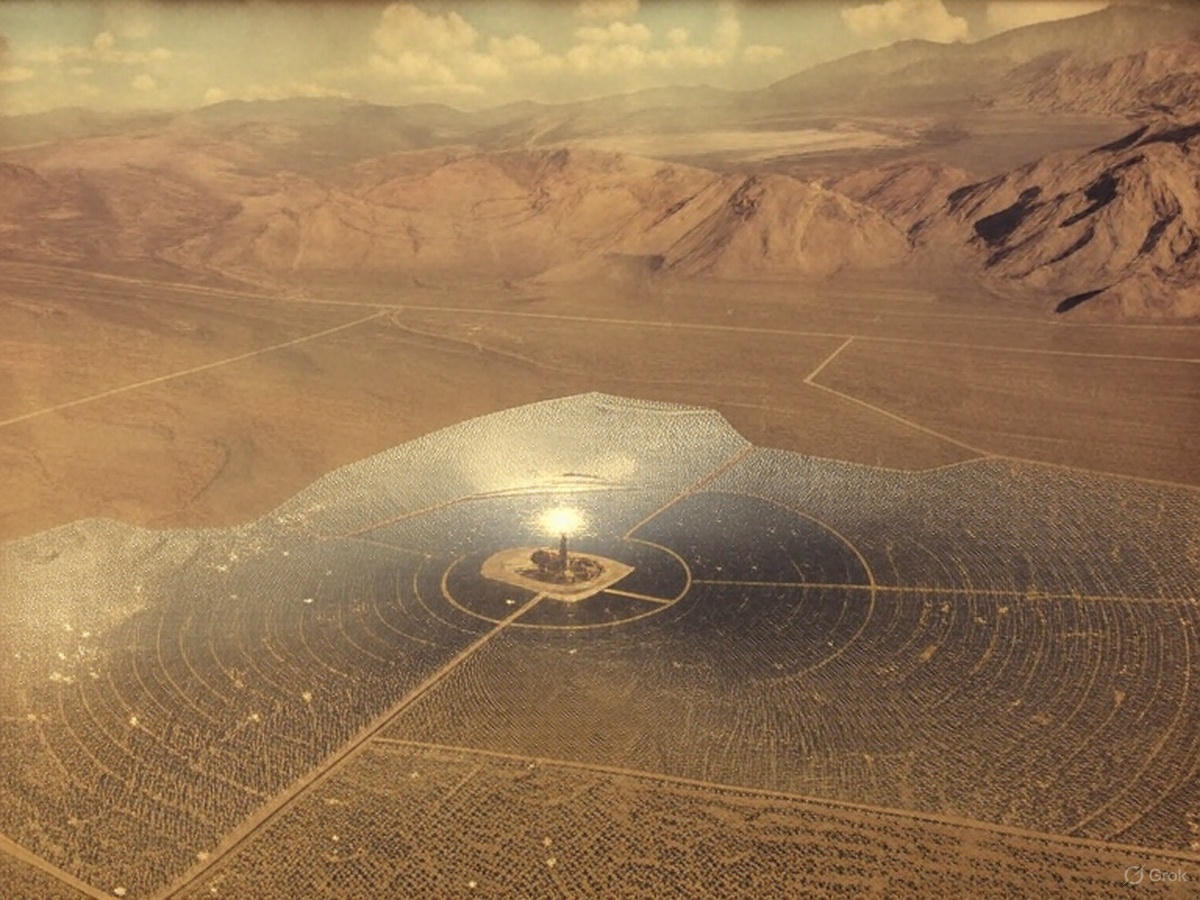The Decline of Ivanpah: $2.2 Billion Solar Dream Shuts Down
Introduction
On September 23, 2025, the New York Post highlighted the closure of the Ivanpah Solar Power Facility in California’s Mojave Desert—a project once hailed as a symbol of clean energy innovation. Built at a staggering $2.2 billion, the facility was expected to power 140,000 homes but is now shutting down, branded a failure that “never lived up to its promises.”
$2.2 billion solar plant in California turned off after years of wasted money: ‘Never lived up to its promises’ https://t.co/TuRZYvDyjX pic.twitter.com/PHkiQV3QHx
— New York Post (@nypost) September 23, 2025
The Tweet That Sparked Debate
According to the New York Post’s post on X (@nypost, 20:54 UTC, September 23, 2025), Ivanpah is being phased out after years of underperformance, inefficiency, and controversy. The post, accompanied by an aerial image of the facility, described the project as a massive waste of taxpayer money.
Ivanpah’s History in Brief
- Location: Mojave Desert, near the California-Nevada border
- Launch: 2014 as the world’s largest solar-thermal plant
- Technology: 173,500 mirrors (heliostats) reflecting sunlight onto 459-foot towers to generate steam power
- Backers: NRG Energy, Google, BrightSource Energy
- Funding: $2.2 billion total, with $1.6 billion in federal loan guarantees + $539 million in tax credits
Despite its ambitious design, Ivanpah never reached its promised potential.
Why Ivanpah is Shutting Down
- Outdated Technology – Solar-thermal tech was overtaken by cheaper, more efficient photovoltaic (PV) panels.
- Economic Inefficiency – PG&E canceled long-term purchase contracts after finding PV energy more affordable.
- Environmental Damage – Estimated 6,000 bird deaths annually due to intense solar heat.
- Underperformance – Failed to meet generation targets, often supplementing with natural gas.
Public and Political Reactions
- Critics label it a “boondoggle” and “green scam.”
- Environmentalists highlight bird mortality and ecological damage.
- Californians question wasted taxpayer dollars and poor planning.
- Experts stress that government-backed projects must stay flexible to evolving tech.
Broader Implications for Renewable Energy
Ivanpah’s decline is not just about one plant—it reflects the risks of locking into outdated technologies. The renewable energy sector must:
- Embrace technological adaptability
- Balance public vs private funding models
- Consider environmental trade-offs
- Align investments with market competitiveness
FAQs
Q1: What was Ivanpah’s original goal?
It aimed to generate 400 MW of power, enough for 140,000 homes.
Q2: Why did Ivanpah fail?
Due to high costs, outdated technology, and failure to meet energy targets.
Q3: Did Ivanpah cause environmental harm?
Yes, it disrupted desert ecosystems and killed thousands of birds annually.
Q4: Who funded Ivanpah?
A mix of private investors (NRG Energy, Google, BrightSource) and U.S. federal government loans and tax credits.
Q5: What does this mean for future renewable energy?
It shows the importance of flexibility, cost-effectiveness, and ecological awareness in energy planning.
Conclusion
The Ivanpah Solar Facility started as a beacon of renewable hope but ended as a $2.2 billion cautionary tale. Its shutdown reminds us that innovation must evolve alongside technology, economics, and environmental realities.
Opinion
Ivanpah’s decline forces us to question: Should governments fund massive, experimental projects at any cost, or should innovation be left to competitive markets that adapt faster? On one hand, without bold initiatives like Ivanpah, renewable energy might never progress beyond prototypes. On the other hand, when billions are invested in rigid technologies that quickly become outdated, taxpayers and ecosystems pay the price.
The lesson is not to abandon ambitious projects, but to rethink how we design them: flexible, adaptive, and responsive to rapid technological change. Ivanpah may fade into the desert dust, but the debate it sparks about risk, responsibility, and resilience in clean energy is just beginning.


0 comments